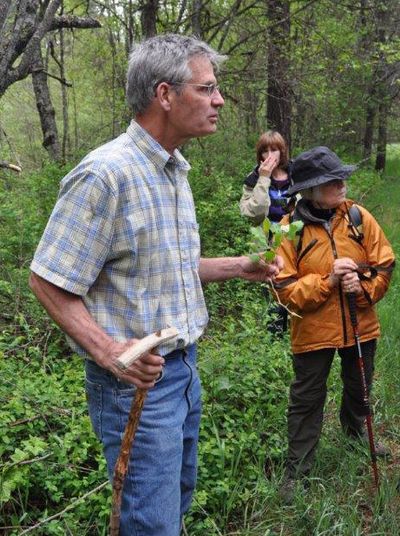Tour ties together plants, MAC exhibit

I played hooky from weeding and mowing to join local naturalist and historian Jack Nisbet for a tour of the Colville Valley one Saturday in May. Nisbet has been leading a number of tours this spring throughout the region in celebration of the Northwest Museum of Arts and Culture’s current exhibit on naturalist and explorer David Douglas.
The Scottish naturalist came to the Pacific Northwest in 1825 under orders from the London Horticulture Society to collect plants that might make good candidates for British gardens and provide new forest products. Between 1825 and 1834, Douglas traveled extensively from the mouth of the Columbia River to the area we now know as Eastern Washington, northeast Oregon, North Idaho and the southern interior of British Columbia. Traveling with fur traders and native guides by canoe, horse and foot, he made several trips between the fur trading posts at Kettle Falls, Spokane House at the confluence of the Spokane and Little Spokane rivers and Walla Walla during his explorations.
Douglas spent a lot of time in the Colville Valley either using ancient native trails or walking the forests, grasslands and marshes looking for plants. The second week of May 1825 found Douglas exploring what is now the Little Pend Oreille National Wildlife Refuge in the mountains southeast of Colville. It was here that Nisbet brought us to see the wildflowers, shrubs and trees that intrigued Douglas nearly 200 years ago. Because we were in the area at the same time of year that Douglas was, we were able to find the plants as he would have seen them.
Our first stop was at a grove of 300-year-old Ponderosa pines. The pines measured about 3 feet in diameter and 125 feet tall. Their bark was deeply furrowed and a beautiful tawny red color typical of old Ponderosa pines. Nisbet pointed out old fire scars that blackened the trunks but could not penetrate the thick bark.
We then began searching for wildflowers on the slope under the pines. They weren’t hard to find. When Nisbet began to name them, a lot of the names seemed very familiar – lupine, kinnikinnick, phlox, lily and Oregon grape. All these and dozens more are now common ornamental plants in our gardens. Douglas did just what he was charged with and collected interesting native plants and shipped pressed specimens and seeds back to London where horticulturists grew them and began to breed them. As a result of this chain of events we now can enjoy colorful Russell lupines, garden phlox, clarkia, red currant bushes, penstemons, mariposa lily, monkhood and pale evening primrose, just to name a few.
Nisbet is planning several more tours over the summer. To check on dates, places and times go to Nisbet’s website, jacknisbet.com.